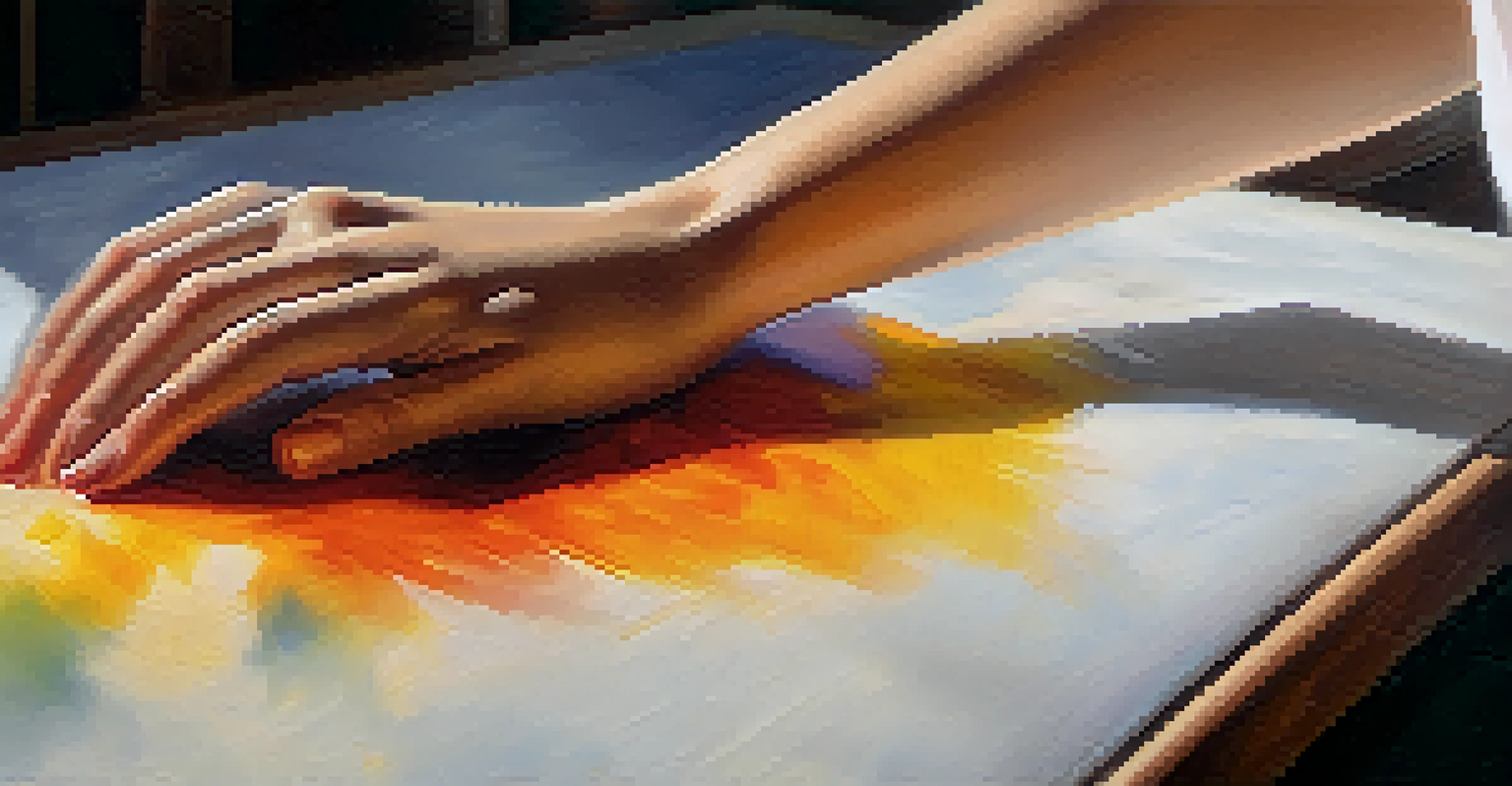Preserving Value: Best Practices for Art Collection Care

Understanding the Importance of Art Care
Art collections are not just investments; they are expressions of culture and history. Proper care ensures that these pieces retain their aesthetic value and integrity over time. Without adequate preservation, art can deteriorate, losing not only monetary worth but also its cultural significance.
Art is not what you see, but what you make others see.
Imagine owning a beautiful painting that, due to neglect, fades and cracks. This not only affects its visual appeal but also its market value. By prioritizing care, collectors can ensure their art continues to tell its story for generations to come.
Related Resource
Thus, understanding the importance of art care is the first step in becoming a responsible collector. It's about respecting the work and the artist, ensuring that each piece remains as vibrant and engaging as the day it was acquired.
Creating the Ideal Environment for Your Art
The environment where art is displayed can significantly impact its condition. Factors such as temperature, humidity, and light exposure play crucial roles in preserving artworks. For instance, extreme temperatures can warp frames, while high humidity can encourage mold growth on canvases.

To create an ideal environment, aim for a stable temperature between 65-75°F and humidity levels between 40-50%. Investing in a dehumidifier or air conditioner may be worthwhile to maintain these levels, especially in areas with fluctuating climates.
Art Care Preserves Value and History
Proper care of art collections is essential to maintain their aesthetic and cultural significance over time.
Additionally, consider the placement of your artwork. Avoid direct sunlight and areas near heat sources to prolong the lifespan of your pieces. A little attention to the environment can go a long way in preserving your collection’s beauty.
Handling Art: Best Practices to Follow
When it comes to handling art, gentle care is paramount. Always wash your hands or wear cotton gloves before touching your pieces to avoid transferring oils or dirt. Additionally, when moving artworks, use two hands to support both the top and bottom to prevent damage.
The best way to predict the future is to create it.
If you’re dealing with framed pieces, consider using a frame stand or easel to avoid leaning them against walls or furniture, which can cause scratches. Remember, even the smallest mishandling can lead to irreversible damage.
Related Resource
In short, treating your art with care during handling can prevent a host of issues. By adopting these practices, you’ll ensure that your collection remains intact for years to come.
Regular Cleaning: Keeping Your Art Pristine
Cleaning your artwork regularly is essential to maintaining its visual appeal. Dust can accumulate and dull the surface, so a gentle, dust-free cloth can work wonders. For paintings, use a soft brush to remove dust from the frame and canvas without risking damage.
However, avoid using any cleaning products unless they are specifically designed for art. Chemicals can cause more harm than good, leading to discoloration or degradation of the materials. If in doubt, consulting a professional conservator can save you from costly mistakes.
Create the Right Environment for Art
Maintaining stable temperature and humidity levels is crucial for preserving the condition of your artwork.
Regular cleaning not only enhances the beauty of your art but also allows you to spot any issues early on. By being proactive, you can address problems before they escalate, ensuring your collection remains in top condition.
Insurance: Protecting Your Art Collection
One of the smartest moves a collector can make is to insure their art collection. Insurance provides financial protection against theft, damage, or loss, which can be invaluable given the often high value of art pieces. It’s an essential safety net that every serious collector should consider.
When insuring your art, be sure to obtain a professional appraisal to determine the accurate value of each piece. This can help you avoid underinsurance, which can lead to financial loss if you ever need to make a claim.
Related Resource
In essence, safeguarding your art collection with insurance is a wise investment. It offers peace of mind, allowing you to enjoy your collection without the constant worry of potential loss.
Professional Conservation: When to Seek Help
Sometimes, despite our best efforts, art requires professional attention. If you notice significant damage, such as tears, fading, or mold, it’s time to consult a conservator. These experts are trained in the delicate process of restoring art while preserving its integrity.
Professional conservation can be a hefty investment, but it can be worth every penny for valuable pieces. A well-conserved artwork can regain its original beauty and maintain its value over time, making it a crucial step for serious collectors.
Insurance Safeguards Your Collection
Insuring your art collection provides financial protection against theft, damage, or loss, ensuring peace of mind for collectors.
Don’t hesitate to seek professional help when needed. It’s better to invest in restoration than to let a piece deteriorate further, ensuring that your collection remains vibrant and valuable.
Documenting Your Collection: A Smart Strategy
Keeping a detailed record of your art collection is a smart strategy for any collector. Documentation should include purchase details, artist information, condition reports, and photographs of each piece. This not only helps in tracking value but also aids in insurance claims if necessary.
Consider creating a digital database where you can easily update and access this information. This can be particularly helpful if you have a large collection, allowing you to manage and organize your art with ease.

In summary, documenting your collection enhances its value and provides a safety net for future reference. It’s a proactive approach that every art collector should embrace to protect their investment.